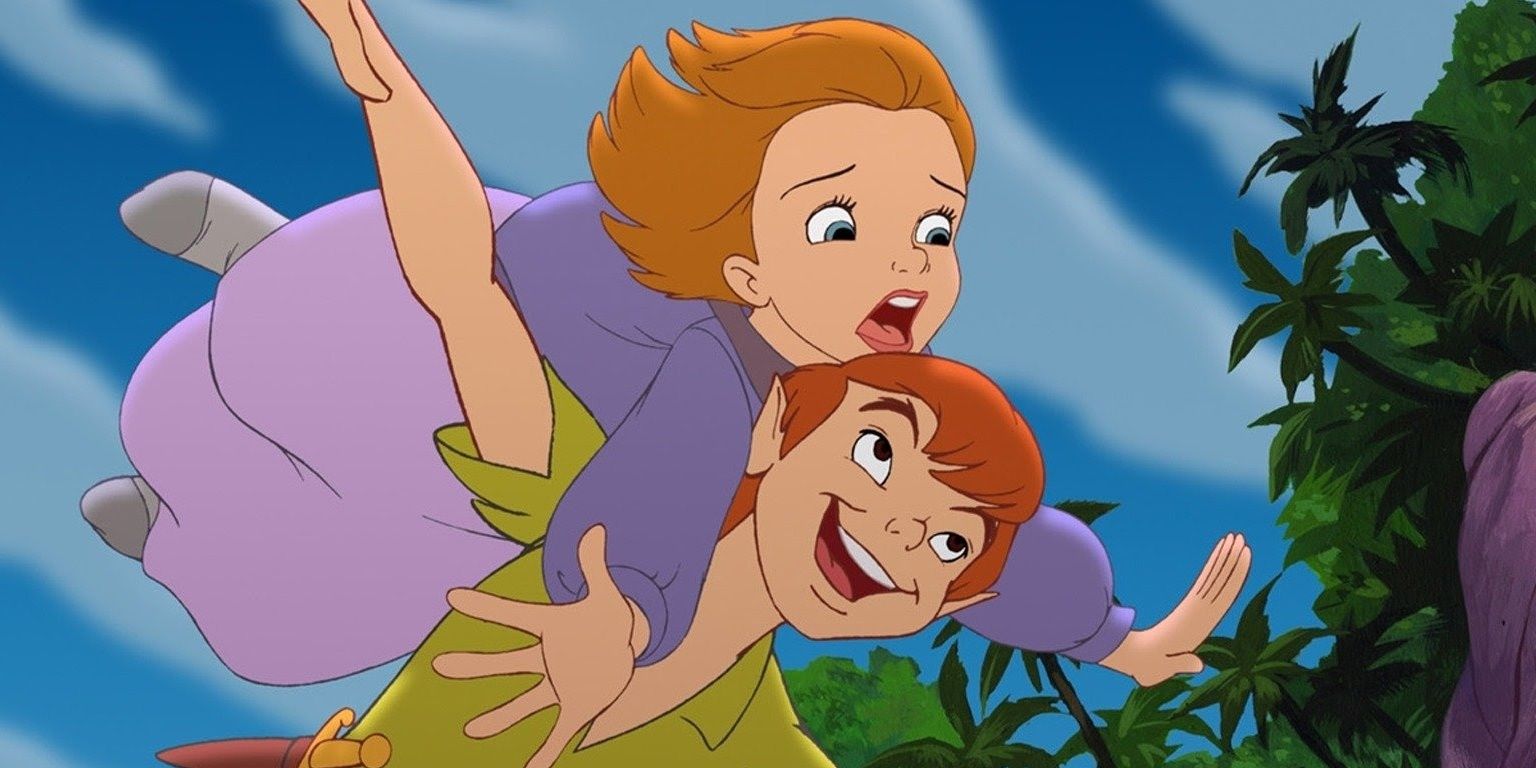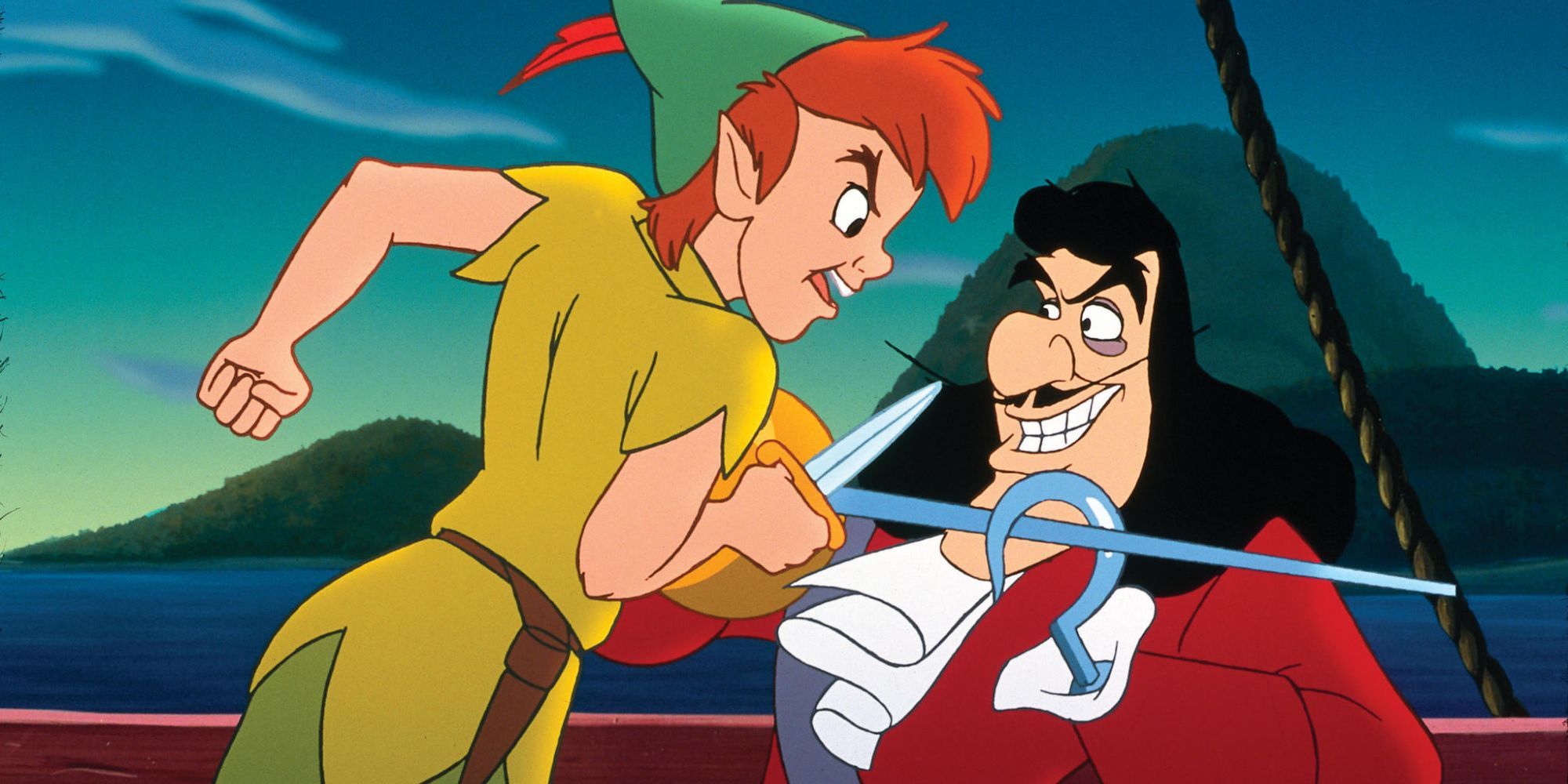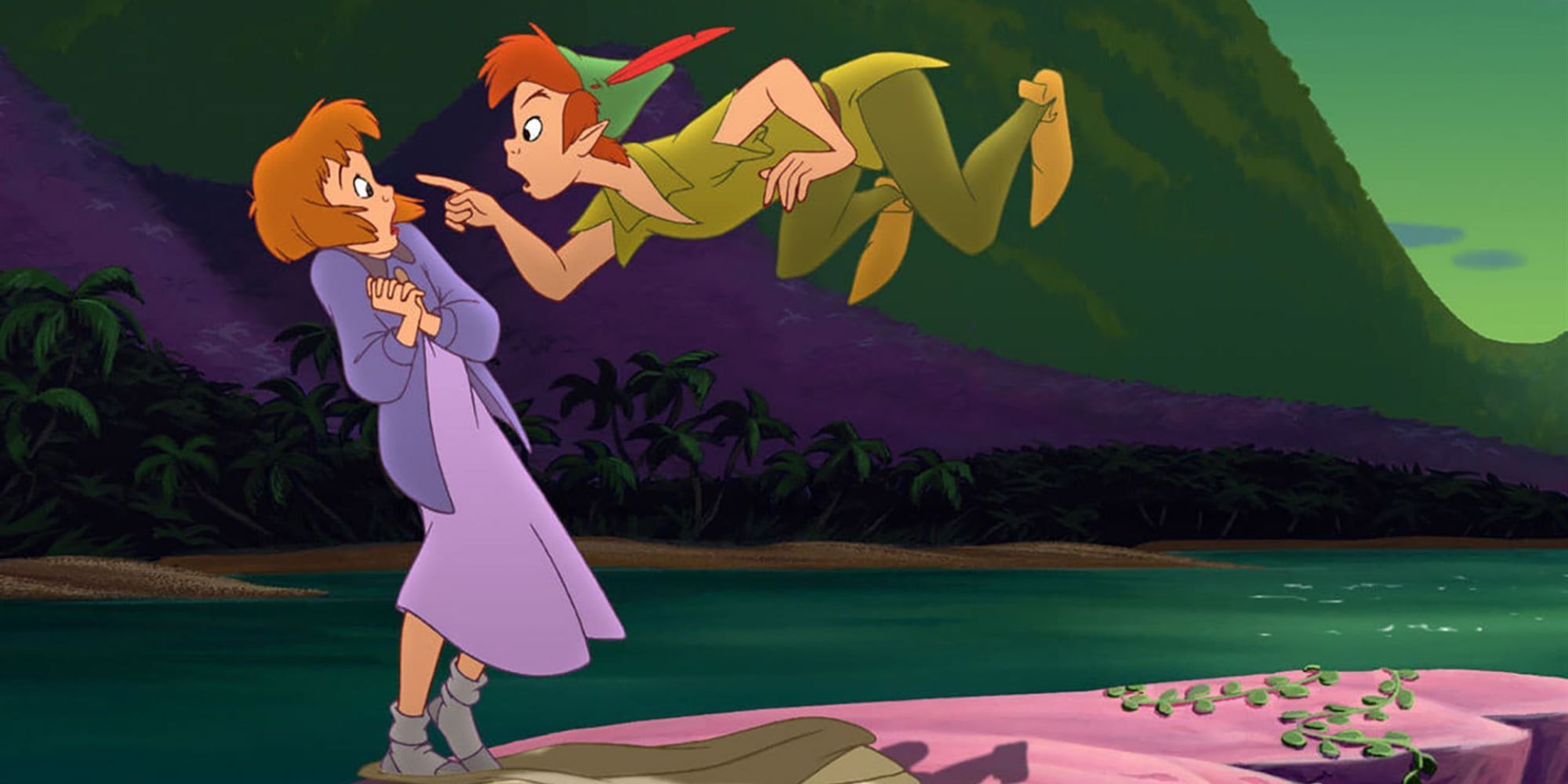Long before Disney tried to recapture the magic of its 1953 Peter Pan film, there were many attempts to bring the classic J.M. Barrie tale to live-action. There was the controversial Steven Spielberg-directed Hook, loved by some and loathed by others. There was the gorgeous 2003 Peter Pan, directed by P.J. Hogan. And then there was Joe Wright's Pan, a movie so ill-conceived and poorly developed that we're all better off never speaking of it again. These stories are nothing new. However, what few people remember is that the House of Mouse itself has also tried its own hand at bringing Never Land back to the screens way before this year's Peter Pan and Wendy. Except it wasn't in live-action. In 2002, Disney added a Peter Pan follow-up to its long list of animated sequels: the aptly titled Return to Never Land.
What Is ‘Return to Never Land’ About?
A direct sequel to Walt Disney Pictures’ 1953 Peter Pan, Return to Never Land is loosely based on the characters created by J.M. Barrie in his 1911 children’s book Peter Pan and Wendy. The movie is written by Temple Mathews and Carter Crocker, and directed by Robin Budd and Donovan Cook. The plot follows Wendy’s (Kath Soucie) firstborn daughter, Jane (Harriet Owen), as she accompanies Peter (Blayne Weaver) on a new set of adventures in the remote, magical island of Never Land.
But, unlike her mother, little Jane isn’t a carefree young girl obsessed with fairy tales and terrified of growing up. Through the hardships of war—the story takes place during the London Blitz, in World War II—Jane was forced to grow up way too quickly. With her father away on the battlefield and the constant threat of bombs surrounding her childhood home, Jane has, as the movie puts it, discarded childish things like Peter Pan. Now, it’s up to the boy who wouldn’t grow up to swoop in and help Jane regain some of her innocence and sense of wonder.
The story begins for real with Wendy receiving the news that her children, Jane and baby Danny (Andrew McDonough)—who looks an awkward lot like Pan himself—are scheduled to be evacuated to the country. During the Blitz, the English government removed all the children from the capital to protect them from the air raids. It’s a story that history buffs and Chronicles of Narnia fans know all too well. But before she can be taken to safety, Jane is captured by Captain Hook (Corey Burton) and his men, who mistake her for Wendy. The plan is to use her as bait to, once again, take down Peter Pan.
The plan, of course, fails. Peter rescues Jane, and the two slowly develop a bond that helps Jane come to terms with the fact that she is still a child. It takes a while, of course. Initially, Jane almost kills Tinker Bell by saying she doesn’t believe in fairies, and Hook nearly gets her to turn on Pan. By the end of the movie, however, Jane realizes the pirate's devious plan and becomes Never Land’s very first Lost Girl—a title that only a true child can earn. She returns home with her heart full of whimsy and wonder to tell her little brother stories about Peter Pan. Soon after, her father returns home too.
‘Return to Never Land’ Was One of the Few Disney Sequels to Get a Theatrical Release
The notion of a sequel to Peter Pan starring Wendy’s own daughter isn’t an absurd one. The seed is planted right there, in J.M. Barrie’s Peter Pan and Wendy: the author ends the novel implying that Wendy’s daughter, Jane, will also have her own adventures in Never Land. And so will Jane’s daughter, and her granddaughter, and so on…It is not hard to see, then, where the idea for Return to Never Land came from.
Furthermore, there is the fact that Return to Never Land was released at a time in which Disney sequels came a dime a dozen. However, movies like 1996’s Aladdin and the King of Thieves or 2006’s Bambi II were usually released direct to video, whether on VHS or on DVD. That seems to have been the original plan for Return to Never Land, considering that the film was produced by Disneytoon Studios and Disney Television Animation, two divisions of Disney that were rarely concerned with big theatrical releases. However, when it came time to drop the Peter Pan sequel, Disney decided the film had what it took to take audiences to theaters.
And, from a business standpoint, they were right: Return to Never Land opened third at the box office, behind the Denzel Washington-starring thriller John Q and the Britney Spears vehicle Crossroads. The Peter Pan sequel grossed $109,862,682 in cinemas worldwide. Considering that it had a budget of just $20 million, it was far from a disappointing result. For comparison sake, Disney’s big 2002 release, Lilo and Stitch, had a budget of $80 million and grossed a little less than $275 million, according to Box Office Mojo.
‘Return to Never Land’ Is on the Better Side of the Disney Sequel Spectrum
Critically speaking, though, the movie wasn’t that much of a hit. Reviews gathered on Metacritic show that Return to Never Land received a mostly mixed response from critics. Many were quick to point out that the film is a subpar follow-up to the original Peter Pan and that it lacks the magic of Disney’s first trip to Never Land. Perhaps most importantly, critics also pointed out that the film feels very much like a direct-to-video project.
And, indeed, at merely 72 minutes long, Return to Never Land has the runtime and the pacing of a straight-to-DVD Disney sequel. At first, this might sound like one heck of a slight. After all, Disney direct-to-video sequels are hardly known for their quality. We all remember cinematic disasters like Beauty and the Beast: The Enchanted Christmas and Pocahontas II: Journey to the New World. Or maybe we don’t remember, and it’s best to keep it that way.
However, not all Disney direct-to-video sequels are cut from the same cloth. Some, like Cinderella III: A Twist in Time and Lion King II: Simba’s Pride, have managed to gather a devoted fanbase. Much like these films, Return to Never Land is on the better side of Disney's sequel spectrum—the only problem is that it was released theatrically. The movie does have problems with pacing, and the plot can be ridiculously silly from time to time. For instance, instead of the classic ticking crocodile, Captain Hook is now pursued by a giant octopus that goes plop-plop incessantly. Likewise, the music has a Disney Channel quality to it that it makes it too generic and forgettable.
Still, the movie has its moments. The animation is quite pretty, despite the typical early 2000s over-reliance on CGI, and some scenes are actually lovely and funny. But perhaps these half-decent to good moments are precisely the reason why Return to Never Land has fallen into oblivion. In the end, the film just isn’t as good as its predecessor, nor is it bad enough to earn a place in our collective memories. When push comes to show, Return to Never Land simply doesn’t fly.




